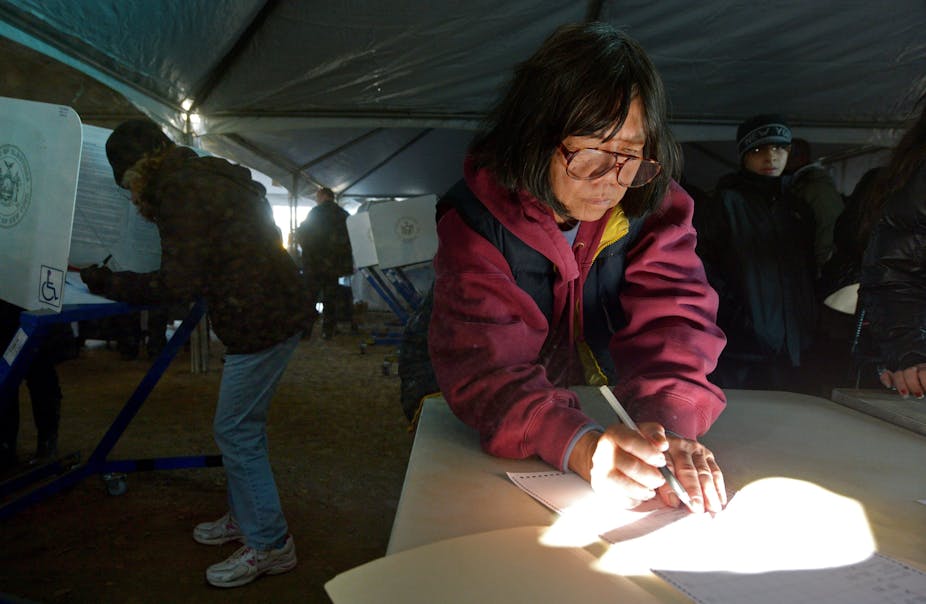Besides the recent polarised debates about the carbon tax, another response to climate change is underway in Australia. It’s much quieter, less contested, and it seems to attract support from across the political spectrum. Governments, businesses and individuals have begun adapting their planning, operations and services to future climate change.
They do this because they understand that climate change will have social, economic and environmental impacts even if the most stringent greenhouse gas emissions reductions are forced upon society immediately. Over the past five years, we’ve seen a rather quiet, bottom-up movement of community leaders, key businesses and local governments planning for the medium and long-term impacts of climate change. These individuals and organisations have taken climate change seriously and considered its consequences a significant risk for their future viability as communities and organisations and for their ongoing delivery of services to clients and the community.
Climate change adaptation is still in its infancy but growing up quickly. Initially much of this work was creative experimentation or trial and error. It focused on understanding the climate science and collecting evidence to support the business case for spending money on adaptation now. In the public and in the private sector alike, climate change projections have played a major role in building the business case for initial adaptation projects.
What has emerged more recently, however, is an increasing understanding that adaptation is here to stay. If the climate keeps changing for decades to come, adaptation will need to be much more than once-off projects. It’ll have to become a continual process of organisational learning and change, and there will never be a red ribbon to cut to celebrate that “we are now adapted to climate change”.
Local government has started embracing adaptation as a process. The standard project cycle management model of plan-do-implement-evaluate-plan is largely inappropriate for adaptation. Adaptation is much messier than that: it usually has multiple objectives, from reducing vulnerability to climate change impacts, to managing financial risks and ensuring business continuity, to limiting reputational losses associated with inaction on climate change, or raising community awareness and understanding of climate change impacts and risks.
Climate change impacts differ from one organisation, community and even individual to the next. There are many starting points for adaptation within an organisation, and many of the benefits of adaptation lie in the future rather than being tangible at present.
The big question then is: how do you, as an organisation or an individual, make sense of adaptation? If it is all about a gradual process or learning and change, how do you determine where to start and who to involve? Even more fundamentally: what does adaptation mean for you, why exactly are you doing it, and where do you draw the boundaries?
Recently completed research I’ve been involved in, undertaken through the Victorian Centre for Climate Change Adaptation Research shows these questions are critical to organisations embracing adaptation as a process of learning and change. Individuals have to become aware of their different interpretations of adaptation and come to some agreement about what the priorities should be for the organisation. They have to be transparent about their motivations and reservations, to challenge their own assumptions, and to engage with other ways of looking at the problem.
What’s even more difficult is to provide guidance on these matters of adaptation framing, precisely because they are so subjective. They depend on factors such as a person’s interest, knowledge, their professional background and institutional environment.
As part of the project “Framing adaptation in the Victorian context”, I’ve helped develop a process-based framework for conceptualising climate change adaptation. It uses a map metaphor to cut through some of the complexity of the adaptation learning process. A website - the Climate Change Adaptation Navigator - visualises the adaptation process as a journey through a landscape. You can explore at your leisure, coming across knowns and unknowns and discovering new territory along the way.
The Climate Change Adaptation Navigator, although only a proof-of-concept at this stage, is just one example of a new suite of adaptation support products that are desperately needed. Another one is the recently launched Climate Change Adaptation Toolkit, developed by NetBalance, the City of Greater Geelong and RMIT University. It provides a three-step process that helps organisations to integrate adaptation into decision-making, despite complexity and uncertainty. Far from providing a silver bullet for adaptation, such second-generation tools openly acknowledge the complexity of the task of adapting to climate change and allow for flexibility and a healthy degree of experimentation.
If we acknowledge that climate change adaptation is a process of societal proportions, in which we all need to be involved, we need to focus our efforts on fostering organisational cultures of learning and change, which includes allowing for making mistakes. There is no end point of “being adapted”.

